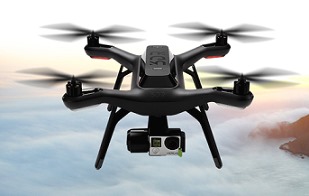다음의 Benjamin Vedder의 VESC에 기반을 두지만 보다 개선하였다는 BitWizard ESC(BESC)의 소개입니다.
http://bitwizard.nl/shop/ESC/BitWizard-ESC
The BitWizard ESC is a VESC compatible Brushless DC motor controller. It is based on the VESC by Benjamin Vedder, but has a few interesting differences!
BitWizard ESC는 VESC 호환 Brushless DC 모터 제어기입니다. 이는 Benjamin Vedder의 VESC에 기반을 두었지만 몇 가지 흥미있는 차이점을 갖고 있습니다.
Instead of the single integrated DRV8302 chip, the BESC uses separate gate drivers, opamps and a stepdown converter. This provides slightly better gate drive, as well as a possible upgrade path to larger voltages later on.
한 개의 집적화된 DRV8302 칩 대신에, BESC는 개별의 게이트 드라이버와 opamp, stepdown 컨버터를 사용합니다. 이는 보다 우수한 게이트 구동 능력을 제공하며, 나중에 더 높은 전압으로의 업데이트 가능성을 제공합니다.
LCD I2C/SPI Interface, with 20x4 LCD
The current design has an SPI connector allowing connection of a "console display". This feature is working right now. Another option for expansion through that connector is an SD card to allow logging your session. This may help in debugging problems with the performance.
현재의 설계는 "console display"의 연결을 위한 SPI 커넥터를 갖습니다. 이 특성은 지금 동작 가능하며 이 커넥터를 통한 또 다른 확장 옵션은 여러분의 session을 기록하게 하는 SD 카드입니다. 이는 성능과 문제점을 디버깅 하는데 도움을 줄 수 있습니다.
BitWizard ESC
Just like VESC, the BESC has(VESC와 같은 점):
60V theoretical MAX. In practise, some margin is required. Running on 14S LIPO is not recommended. 13S is tested works fine.
50A continuous motor current. There is a temperature sensor on the power board that instructs the CPU to reduce the current if things heat up too much.
CAN bus connectivity. (currently untested).
Uart connectivity.
USB connectivity.
A connector with "servo pinout" for PWM input, PWM output.
Analog input for analog throttles.
Unlike the VESC the BESC has(VESC와 다른 점):
A boot button. This allows you to use DFU(dfuse) to reflash your BESC no matter how messed up the firmware has become. No need for an STLINK debugger.
Boot 버튼. 이는 펌웨어가 아무리 뒤죽박죽 될지라도 여러분이 여러분의 BESC를 재기록하기 위해서 DFU(dfuse)를 사용하는 것이 가능하게 합니다. STLINK 디버거에 대한 필요가 없습니다.
Separate gate drivers for the FETs.
FET들의 별도의 게이트 드라이버.
All unused IOs of the CPU broken out to a testpad.
모든 사용되지 않는 CPU의 IO 핀들은 tespad로 마련되어 있습니다.
A separate power board with all the FETs on one side. This allows you to cool the FETs with a heatsink against the PCB. (note: it is of no use to cool the plastic package of the FET. Cooling the PCB is what works.)
한 면에 모든 FET를 실장하는 분리된 power board. 이는 여러분이 heatsink로 FET를 식히는 것이 가능하게 합니다(note: FET의 플라스틱 패키지를 식히는 것이 필요 없다면, PCB를 식히는 것이 동작하는 것입니다).
Separate power board
A stepdown from the motor voltage to 12V. This 12V is used for the gate drivers.
모터 전압을 12V로 stepdown. 이 12V는 게이트 드라이버를 위해서 사용됩니다.
A stepdown from the 12V intermediate voltage to 5V. This 5V is used as the source for the 3.3V LDO for the CPU, but also provided on serveral connectors as a convenience to power for example a hall-sensor-throttle. On the VESC, they say you can use 1A, on the BESC the limit is slightly lower.
12V 중간 전압을 5V로 stepdown. 이 5V는 CPU의 3.3V LDO를 위한 소스이지만 예를 들어 홀센서 스로틀의 전력공급을 위한 편의를 위해서 몇 개의 커넥터를 제공됩니다. VESC 상에 그들은 여러분이 1A를 사용할 수 있다고 말하지만, BESC에서 한계는 약간 낮습니다.
During development we've had a lot of convenience of the separate power board. This allowed us to test with other FETs and stuff like that. When all is said and done, the IRFS7530 is a quite good fit. I could allow you to buy a version with cheaper FETs, but compared to the cost of the control module it doesn't make much sense to provide cheaper(smaller mosfet) power boards. But if you're interested anyway, get in touch.
개발하는 동안에 우리는 별개의 power board가 많이 편리하였습니다. 이는 우리가 다른 FET와 그와 같은 것과 테스트하는 것이 가능하였습니다. 모든 것을 종합적으로 고려해 보아 IRFS7530가 매우 적합하였습니다. 저는 여러분이 저렴한 FET 버전을 구매하도록 하였을 수 있습니다. 그러나 제어 모듈의 비용과 비교하여 이는 저렴한(작은 mosfet) power board를 제공하는 것이 큰 의미가 있지는 않습니다. 하지만 여러분이 어쨌든 관심있다면 연락주세요.
'Radio Control > ESC' 카테고리의 다른 글
| ESC32 V2 메뉴얼 - Firmware Flashing (0) | 2020.04.23 |
|---|---|
| ESC32 V2 메뉴얼 - Connections & Wiring (0) | 2020.04.03 |
| VESC 하드웨어(v4.x) 설정 메뉴얼 (0) | 2018.01.24 |
| 대표적인 상업용 VESC 구입처 (1) | 2018.01.22 |
| PX4ESC의 스펙 (0) | 2015.12.08 |





































